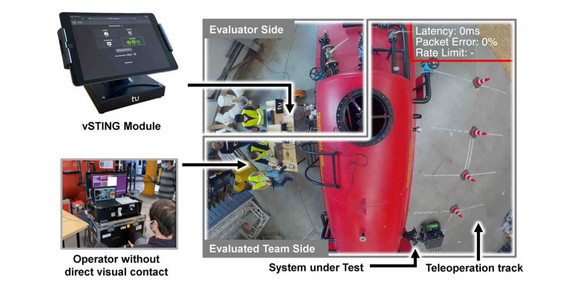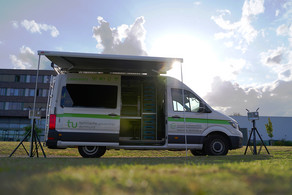Journal article on joint research in German Rescue Robotics Centre published
- News
- News
- DRZ

The German Rescue Robotics Centre (DRZ) has been established since 2018 with the strong support of the BMBF as a national competence centre for rescue robotics. The TU Dortmund participates with its expertise in wireless communication systems. Key communication-related outcomes are the work related to SKATES, SEAMLESS, and vSTING.
The newly publshed article titled "Lessons from robot‐assisted disaster response deploymentsby the German Rescue Robotics Center task force" presented joint work of CNI with several partners within the DRZ:
- Computer Science Department, University of Applied Science Gelsenkirchen (WHS), Gelsenkirchen, North Rhine‐Westphalia, Germany
- Simulation, Systems Optimization and Robotics Group, TU Darmstadt (TUDA), Darmstadt, Germany
- Autonomous Intelligent Systems Group, University of Bonn (UBO), Bonn, North Rhine‐Westphalia, Germany
- Deutsches Rettungsrobotik‐Zentrum e.V. (DRZ), Dortmund, North Rhine‐Westphalia, Germany
The article has been published in December 2023 in the Journal on Field Robotics (Wiley). Its abstract and its abstract is shown below:
Earthquakes, fire, and floods often cause structural collapses of buildings. However,the inspection of such damaged buildings poses a high risk for emergency forces oris even impossible. We present three recently selected missions of the RoboticsTaskForce of the German Rescue Robotics Center (DRZ), where both ground and aerialrobots were used to explore destroyed buildings. We describe and reflect themissions as well as the lessons learned that have resulted from them. To makerobots from research laboratories fit for real operations, realistic outdoor and indoortest environments were set up at the DRZ and used for tests in regular exercises byresearchers and emergency forces. On the basis of this experience, the robots andtheir control software were significantly improved. Furthermore, expert teams ofresearchers and first responders were formed, each with realistic assessments of theoperational and practical suitability of robotic systems.





